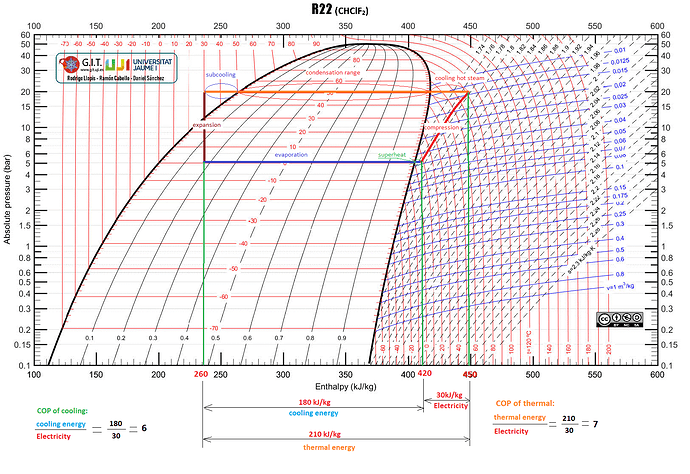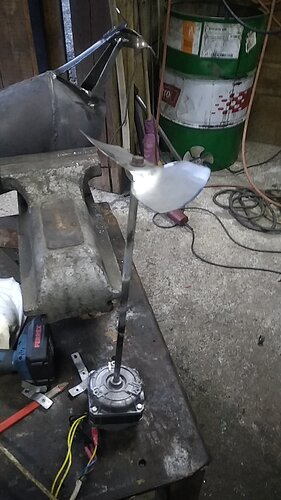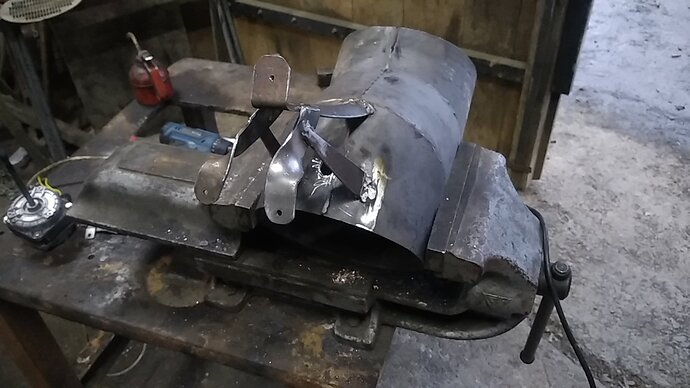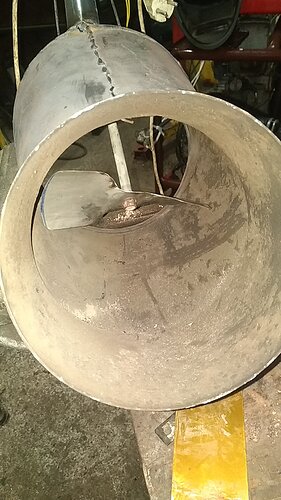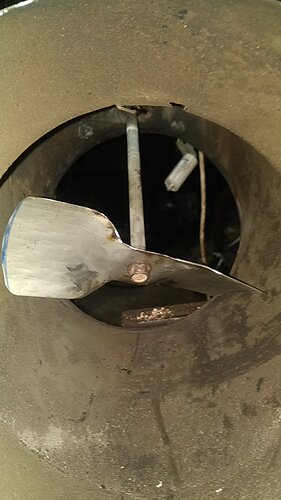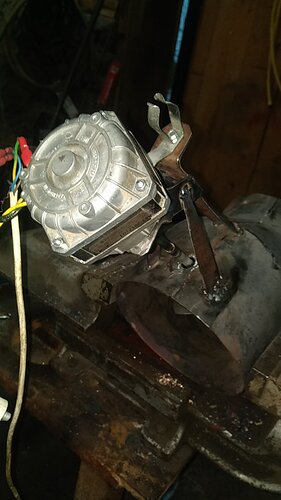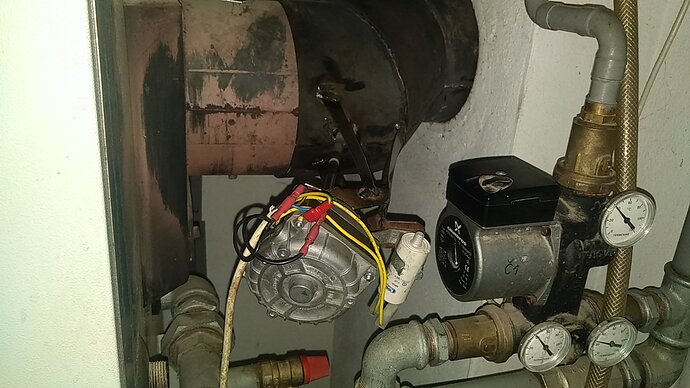Dave, just looked at your radiator again. How do you let the air out? Better to make it crossflow, warm in at the top, cold out. Did it help?
The radiators have a bleed screw at the top on left hand side of each panel , my problem is not air in the system though as if it was then the bottom would be hot and the top would be cold .
The weather has changed back to summer for some strange reason and now its far too hot to light the fire up to heat the radiators , guess i am going to have to wait a while till it cools down too carry on trying to balance the system .
Dave
Hello to all. I will try to present my own heat pump for heating the house. As a source of heat, I have a 50 m3 rainwater collector, it is massively concreted and a connecting pipeline, both of which act as an earth collector. To achieve high efficiency of the heat pump, it is very important to choose heat exchangers with a large surface area, to have the hydraulics arranged in the system so that as cold water as possible enters the heating exchanger (not more than 30 ° C), … I am attaching a picture where the operation and calculation are shown below.
It is interesting to note that if a diesel generator (or wood gas generator), which would act as cogeneration, would drive a heat pump, I would get more than 200% of the heat energy in the house, as contained in the energy source.
If I’m figuring right, that’s 13206 U.S. Gallons. Is this a tank inside your house?
Really nice plumbing. Now I’ll never show what mine looks like.
Now it is definite Sir Tone. Did you design it yourself all the way? What fluid do you use?
To long ago for me to understand the grafics.
I learned about a simple system with an acre of land deep excavated having a copper pipe buried like for a heated floor and the pipe connected to compressor connected to home . and there was one valve to change from heating home to cooling home .
hello Joep, you’re kidding me a little with “sir”, ha, ha, …
I did this about 18 years ago, it is filled with R22, today this freon is banned. If you have space to place a ground collector (some 500 m of alkaline 1 "pipe buried 1 m deep, at a distance of 1 m), the heat pump is an excellent solution for heating
Hi Tom, the rainwater collector is 30 m away from the house, it is actually higher than the house because we just live in such a landscape.
Tom, the installation is not worthy of such praise, I believe yours works well too.
With a thermal inversion and if I don’t burn the boiler every day, it is sometimes difficult to start, as Kristjan says, newsprint has to be burned through the chimney door to create a column of hot gas. Now I’ve updated this a bit with the fan in the chimney.
Ha, just took mine out. I had an extra headexchanger build in and hay/charcoalfilter and an extra fan. But he didnt pull enough and couldnt go bigger. I think that is why I had a lot of problems with sood. Took it all out and only a little with startup like you do. My chimney is steel pipe, so no mass, only a minute or so. 1 meter horizontal pipe is like a dropbox now, less dust in the vertical pipe. You can see right trough from the bottom.
Selfmade man you are! We will have a conversation about a heatpump.
Maine’s Renewable Energy Portfolio and added biomass-generated thermal energy to the mix. Details were left to the Maine Public Utilities Commission.
This past year, the PUC rejected attempts to add heat pumps—which would have grabbed all the funds—to the thermal renewable energy credits (TRECs) and adopted virtually all of our industry’s recommendations. The Maine Pellet Fuel Association’s annual meeting in December was informed that the thermal REC stands to provide a homeowner using a pellet boiler with $1,300 in annual income; an average high school with a chip boiler could receive $40,000 in annual revenue. In essence, the TREC program can reduce the cost of wood pellets to a new customer by $77 per ton.
No I did not get the money . I need to put in an application . " There is money you need to put in application . The money is gone we are not accepting application . " So you need have put in an application before the law making the grant process is passed .
Hello Joep and Henry, a well-designed heat pump is a very efficient way of heating and also cheap, even cheaper than firewood if you have to buy them. What would Joep be talking about?
Well Tone, very impressed bu your work so far. As for heatpumps, I would like to install a CO2 pump because the medium is more eco. Only talk about it. Nothing to build. But since you do everything yourself, you are the guy to ask.
How to calculate, drawbacks etc
Hello Joep, the features of CO2 refrigerant systems are:
-high pressures, which means that they must be built from strong pipelines, heat exchangers of special design, as well as high pressure compressors or some versions have a cascade connection of compressors, in short quite expensive system construction
-CO2 as a refrigerant has a major drawback, namely the “critical point” of just over 30 ° C, which means that it can no longer be condensed above this temperature but only the gas is cooled, resulting in lower energy transfer or higher electricity consumption
-reaches high temperatures in the first gas cooler, which is good for radiator heating, but it is also necessary to have a low-temperature heating circuit for gas cooling up to 30 ° C
My opinion is that this system is not the most suitable for self-construction, if you want eco-refrigerant, build an R600a gas system, this is actually a mixture of butane and propane (similar in composition to LPG), and the device must stand outside for safety.
I am in process of cleaning boiler . I have gallon of rust treatment that I intend to treat boiler tubes with . I am considering stopping use of wood and heating with generator exhaust running generator on propane so that boiler is heat exchange that is more efficient then my existing propane boiler .
Tone, you’ve done a great work. And well, if we talk about boilers and heating systems, you should check out this site with all the boilers’ related information, and get pretty useful and helpful tips for different issues, that may occur during an execution process of it. It’s really awesome when you have such bookmarks in your phone.
Hello @trigaux , in the next thread you asked about the material for the lower nozzle, thanks to Kristjan for answering you, but here is one example of the use of high carbon steel in the hot zone, the picture shows the durability of two different carburized steels, on one side plain sheet and ribbed iron , and on the other spring steel and a drill for drilling stones. Let me say that both metals were exposed to high temperatures for 2 years, the steel of the springs and the drill bits were particularly high, here the usual flat jelly only lasted a week.
Sorry Tone, just blabbering. But this is still in the back of my head somewhere far away. The German guy I follow on YT is about to build his own heat pump. Cant wait to see his outcome. As soon as the COP is above 4 you can run a generator for the heatpump and dont lose energy. Main advantage is you can dislocate power and heatproduction. Heatpump in the house and power far away. Well, woodgas is higher on the list. And the list is getting shorter. Ha, some day.
Thanks for sharing your projects.
Joep, the heat pump is a very simple device, a compressor, a throttle valve and two heat exchangers. COP, however, depends mostly on the thermal difference it overcomes and on the size of the laptops, if you have underfloor heating for heating (30°C) and an outside ground collector (10°C), you can easily reach COP 7 or even more and if you also use waste heat from the gasifier and engine, but would reach COP 10. I need to explain in more detail where I get the COP 10 from. If we know that 10 kg of wood contains 40 kWh and from this we can produce at least 10 kWh of electricity, which is the driving energy for the heat pump and the measure on which COP is calculated. So if the heat pump extracts 60 kWh of heat from the ground from 10 to 30 °C, for this it uses 10 kWh of electricity, which turns into heat and is useful, we have 70 kWh of heat energy in the house, to which we add another 30 kWh of waste heat from the generator and we get 100 kWh. ![]()
Yes.Yes.
My next specialty printed up hat or shirt:
“Let no BTU Escape Free, unharnessed, unused!!”
Too long.
Edited. “Let no BTU Escape Unworked!”
Tone; you or JoepK would not use BTU, but Calorie.
Regards
Steve unruh
